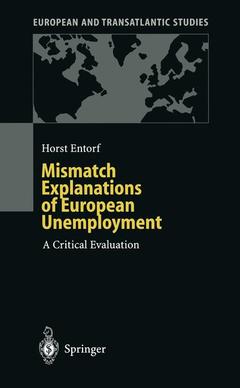Mismatch Explanations of European Unemployment, Softcover reprint of the original 1st ed. 1998 A Critical Evaluation Coll. European and Transatlantic Studies

Looking for the sources of European unemployment: Is the mismatch hypothesis valid?
All the basics are explained in a simple, straightforward manner
The reader is introduced into the theory of spurious mismatch trends
Date de parution : 10-2012
Ouvrage de 206 p.
15.5x23.5 cm
Disponible chez l'éditeur (délai d'approvisionnement : 15 jours).
Prix indicatif 52,74 €
Ajouter au panier


